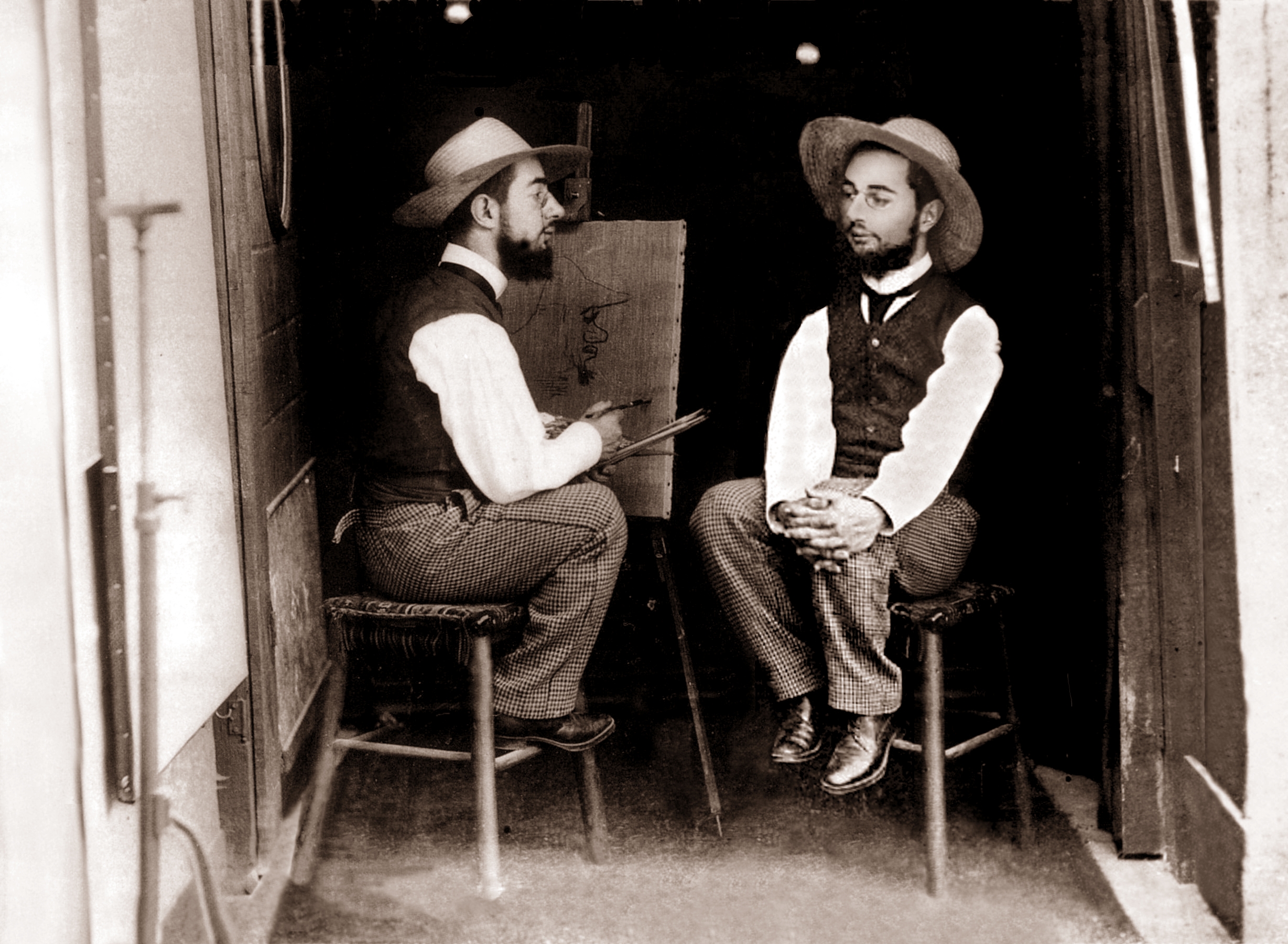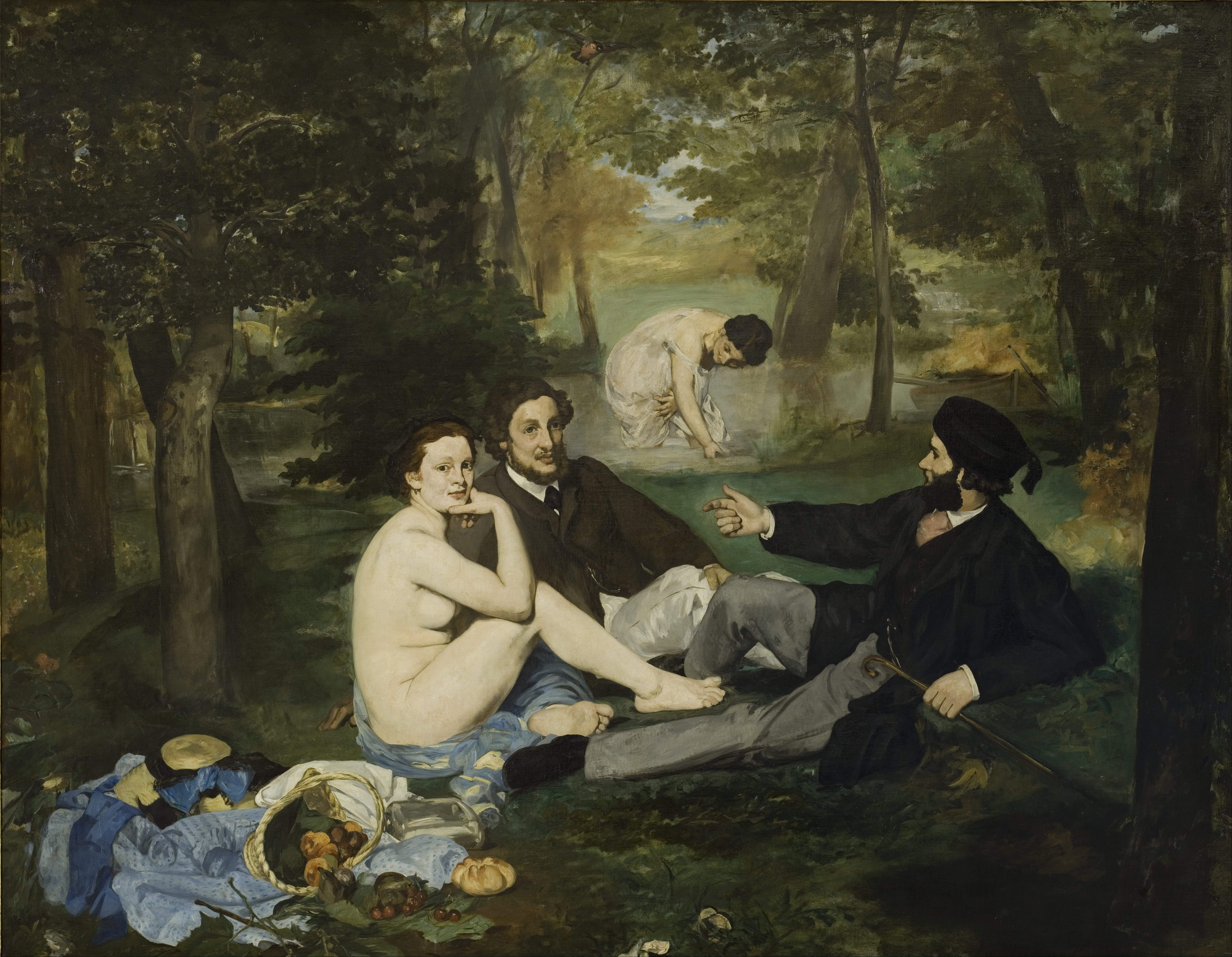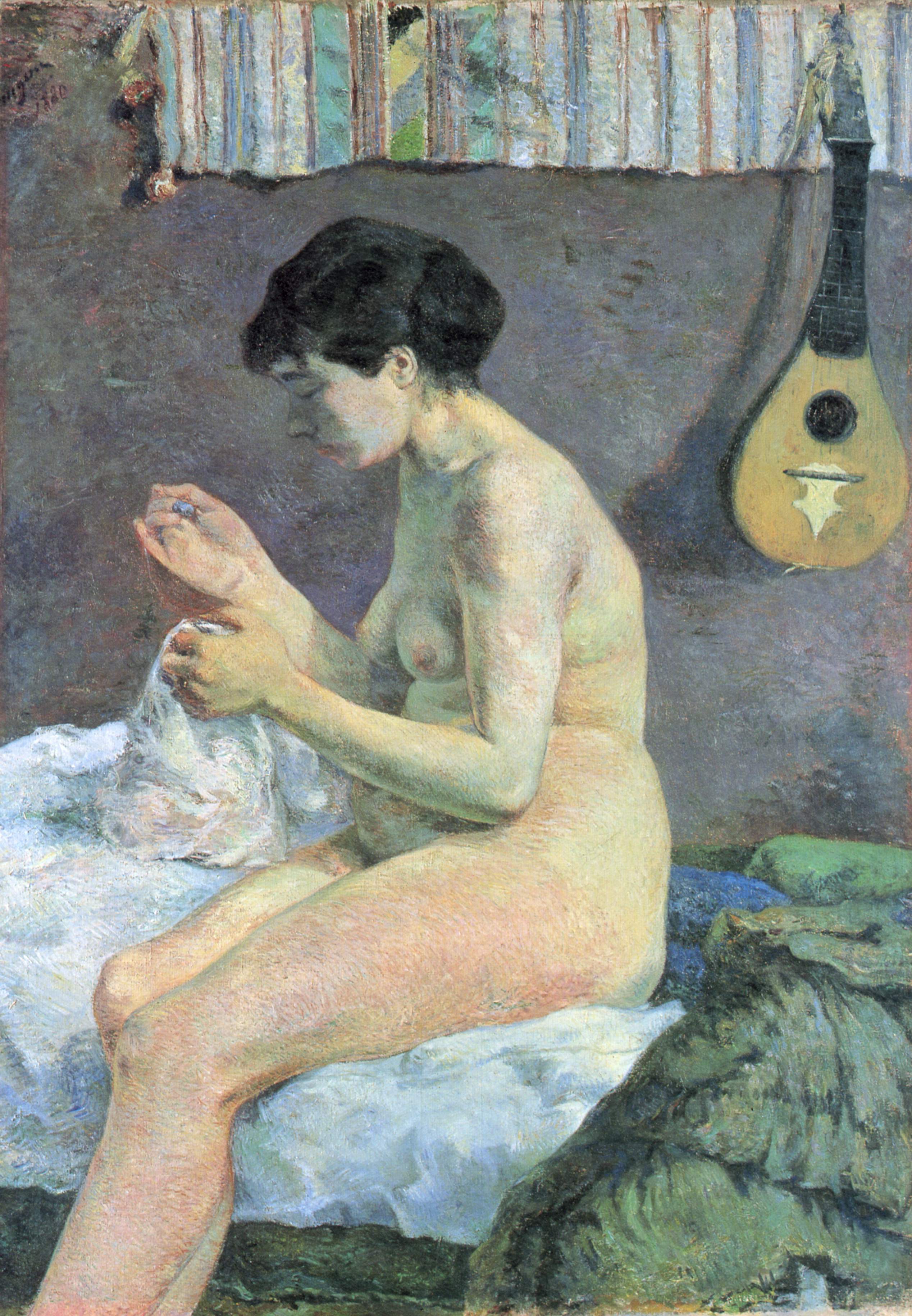|
Louis Valtat
Louis Valtat (; 8 August 1869 – 2 January 1952) was a French painter and printmaker associated with the Fauvism, Fauves ("the wild beasts", so named for their wild use of color), who first exhibited together in 1905 at the Salon d'Automne. ''Les Fauves: a sourcebook'', by Russell T. Clement, p. 2, web: Books-Google-hIC He is noted as a key figure in the stylistic transition in painting from Claude Monet, Monet to Henri Matisse, Matisse. "Louis Valtat (1869 - 1952): Color and Light", REHS, 2008, webpage: REHS-Valtat Life and work Louis Valtat was born on 8 August 1869 in Dieppe, in the Normandy region of France, into a wealthy family of ship owners. Valtat spent many of his childhood years in Versailles (city), Versailles, a suburb of Paris, where he attended secondary school at the Lycée Hoche (near the Palace of Versailles). Encouraged by his father, an amateur landscape painter himself, Valtat became interested in art. At age 17, deciding to pursue an artistic car ... [...More Info...] [...Related Items...] OR: [Wikipedia] [Google] [Baidu] |
Renoir Of Louis Valtat C1904
Pierre-Auguste Renoir (; ; 25 February 1841 – 3 December 1919) was a French people, French artist who was a leading painter in the development of the Impressionism, Impressionist style. As a celebrator of beauty and especially femininity, feminine sensuality, it has been said that "Renoir is the final representative of a tradition which runs directly from Peter Paul Rubens, Rubens to Antoine Watteau, Watteau." He was the father of actor Pierre Renoir (1885–1952), filmmaker Jean Renoir (1894–1979) and ceramic artist Claude Renoir (1901–1969). He was the grandfather of the filmmaker Claude Renoir (1913–1993), son of Pierre. Life Youth Pierre-Auguste Renoir was born in Limoges, Haute-Vienne, France, in 1841. His father, Léonard Renoir, was a tailor of modest means, so, in 1844, Renoir's family moved to Paris in search of more favorable prospects. The location of their home, in rue d'Argenteuil in central Paris, placed Renoir in proximity to the Louvre. Although the yo ... [...More Info...] [...Related Items...] OR: [Wikipedia] [Google] [Baidu] |
Albert André
Albert André ( 24 May 1869 – 11 July 1954) was a French Post-Impressionist figurative painter. He produced portraits of Pierre-Auguste Renoir, his closest friend, and Claude Monet. Biography Born in Lyon, he initially trained there designing patterns for silk. In 1889 he moved to Paris to enroll at the Académie Julian. There he met Paul Ranson, Louis Valtat, and Georges d'Espagnat. He also associated with the group known as Les Nabis which included Pierre Bonnard, Bonnard, Vuillard, Maurice Denis, Denis, Félix Vallotton, Vallotton, Albert Marquet, Marquet and Paul Signac, Signac. In 1894, he exhibited five paintings at the Salon des Indépendants where he caught the eye of Pierre-Auguste Renoir, Renoir. Despite their age difference, a solid friendship united them until Renoir's death in 1919, providing André with guidance in his career. Through Renoir's art dealer, Paul Durand-Ruel, André was able to sell many of his paintings in the United States through the Durand-Ruel ... [...More Info...] [...Related Items...] OR: [Wikipedia] [Google] [Baidu] |
Tuberculosis
Tuberculosis (TB), also known colloquially as the "white death", or historically as consumption, is a contagious disease usually caused by ''Mycobacterium tuberculosis'' (MTB) bacteria. Tuberculosis generally affects the lungs, but it can also affect other parts of the body. Most infections show no symptoms, in which case it is known as inactive or latent tuberculosis. A small proportion of latent infections progress to active disease that, if left untreated, can be fatal. Typical symptoms of active TB are chronic cough with hemoptysis, blood-containing sputum, mucus, fever, night sweats, and weight loss. Infection of other organs can cause a wide range of symptoms. Tuberculosis is Human-to-human transmission, spread from one person to the next Airborne disease, through the air when people who have active TB in their lungs cough, spit, speak, or sneeze. People with latent TB do not spread the disease. A latent infection is more likely to become active in those with weakened I ... [...More Info...] [...Related Items...] OR: [Wikipedia] [Google] [Baidu] |
L'Œuvre (novel)
''(The Masterpiece)' is the fourteenth novel in the '' Rougon-Macquart'' series by Émile Zola. It was first serialized in the periodical '' Gil Blas'' beginning in December 1885 before being published in novel form by Charpentier in 1886. The title, translated literally as "The Work" (as in work of art), is often rendered in English as ''The Masterpiece'' or ''His Masterpiece''. It refers to the struggles of the protagonist Claude Lantier to paint a great work reflecting his talent and genius. is a fictional account of Zola's friendship with Paul Cézanne and a fairly accurate portrayal of the Parisian art world in the mid 19th century. Zola and Cézanne grew up together in Aix-en-Provence, the model for Zola's Plassans, where Claude Lantier was born and received his education. Like Cézanne, Claude Lantier is a revolutionary artist whose work is misunderstood by an art-going public hidebound by traditional subjects, techniques and representations. Many of the characteristic ... [...More Info...] [...Related Items...] OR: [Wikipedia] [Google] [Baidu] |
Henri De Toulouse-Lautrec
Count, ''Comte'' Henri Marie Raymond de Toulouse-Lautrec-Monfa (24 November 1864 – 9 September 1901), known as Toulouse-Lautrec (), was a French painter, printmaker, draughtsman, caricaturist, and illustrator whose immersion in the colourful and theatrical life of Paris in the late 19th century allowed him to produce a collection of enticing, elegant, and provocative images of the sometimes decadent affairs of those times. Born into the aristocracy, Toulouse-Lautrec broke both his legs during adolescence, leaving him with a stunted appearance. In later life, he developed an affinity for brothels and prostitutes that directed the subject matter for many of his works, which record details of the late-19th-century bohemian lifestyle in Paris. He is among the painters described as being Post-Impressionism, Post-Impressionists, with Paul Cézanne, Vincent van Gogh, Paul Gauguin, and Georges Seurat also commonly considered as belonging in this loose group. In a 2005 auction at ... [...More Info...] [...Related Items...] OR: [Wikipedia] [Google] [Baidu] |
Pointillism
Pointillism (, ) is a technique of painting in which small, distinct dots of color are applied in patterns to form an image. Georges Seurat and Paul Signac developed the technique in 1886, branching from Impressionism. The term "Pointillism" was coined by art critics in the late 1880s to ridicule the works of these artists, but is now used without its earlier pejorative connotation. The movement Seurat began with this technique is known as Neo-impressionism. The Divisionists used a similar technique of patterns to form images, though with larger cube-like brushstrokes. Technique The technique relies on the ability of the eye and mind of the viewer to blend the color spots into a fuller range of tones. It is related to Divisionism, a more technical variant of the method. Divisionism is concerned with color theory, whereas pointillism is more focused on the specific style of brushwork used to apply the paint. Pointillism is a technique with few serious practitioners today ... [...More Info...] [...Related Items...] OR: [Wikipedia] [Google] [Baidu] |
Impressionism
Impressionism was a 19th-century art movement characterized by visible brush strokes, open Composition (visual arts), composition, emphasis on accurate depiction of light in its changing qualities (often accentuating the effects of the passage of time), ordinary subject matter, unusual visual angles, and inclusion of movement as a crucial element of human perception and experience. Impressionism originated with a group of Paris-based artists whose independent exhibitions brought them to prominence during the 1870s and 1880s. The Impressionists faced harsh opposition from the conventional art community in France. The name of the style derives from the title of a Claude Monet work, ''Impression, soleil levant'' (''Impression, Sunrise''), which provoked the critic Louis Leroy to coin the term in a Satire, satirical 1874 review of the First Impressionist Exhibition published in the Parisian newspaper ''Le Charivari''. The development of Impressionism in the visual arts was soon foll ... [...More Info...] [...Related Items...] OR: [Wikipedia] [Google] [Baidu] |
Félix Fénéon
Félix Fénéon (; 22 June 1861 – 29 February 1944) was a French art critic, gallery director, writer and anarchist during the late 19th century and early 20th century. He coined the term '' Neo-Impressionism'' in 1886 to identify a group of artists led by Georges Seurat, and ardently promoted them. The Fénéon Prize was established in 1949 by his wife, Fanny Goubaux, from proceeds from the sale of his art collection. Early life Fénéon was born in Turin, Italy in 1861 to Marie-Louise Jacquin (a Swiss schoolteacher) and Pierre Marie Jules Félix Fénéon (a French salesman). He was raised in Burgundy. After placing first in the competitive exams for jobs, Fénéon moved to Paris at age 20 to work for the War Office where he achieved the rank of chief clerk. During his time there he edited many literary works, including those of Rimbaud and Lautréamont, and helped to advance the fledgling pointillist movement under Georges Seurat. He was a regular at Mallarmé's s ... [...More Info...] [...Related Items...] OR: [Wikipedia] [Google] [Baidu] |
Synthetism
Synthetism is a term used by Post-Impressionism, Post-Impressionist artists like Paul Gauguin, Émile Bernard and Louis Anquetin to distinguish their work Style (visual arts), stylistically from Impressionism. Earlier, ''Synthetism'' has been connected to the term Cloisonnism, and later to Symbolism (arts), Symbolism. The term is derived from the French verb ''synthétiser'' (''to synthesize'' or ''to combine so as to form a new, complex product''). History Paul Gauguin, Émile Bernard, Louis Anquetin, and others pioneered the style during the late 1880s and early 1890s. Synthetist artists aimed to ''synthesize'' three features: *The outward appearance of natural forms. *The artist's feelings about their subject. *The purity of the aesthetic considerations of line, colour and form. In 1890, Maurice Denis summarized the goals for synthetism as, :''It is well to remember that a picture before being a battle horse, a nude woman, or some anecdote, is essentially a flat surface covere ... [...More Info...] [...Related Items...] OR: [Wikipedia] [Google] [Baidu] |
Paul Gauguin
Eugène Henri Paul Gauguin (; ; 7 June 1848 – 8 May 1903) was a French painter, sculptor, printmaker, ceramist, and writer, whose work has been primarily associated with the Post-Impressionist and Symbolist movements. He was also an influential practitioner of wood engraving and woodcuts as art forms. While only moderately successful during his life, Gauguin has since been recognized for his experimental use of color and Synthetist style that were distinct from Impressionism. Gauguin was born in Paris in 1848, amidst the tumult of Europe's revolutionary year. In 1850, Gauguin's family settled in Peru, where he experienced a privileged childhood that left a lasting impression on him. Later, financial struggles led them back to France, where Gauguin received formal education. Initially working as a stockbroker, Gauguin started painting in his spare time, his interest in art kindled by visits to galleries and exhibitions. The financial crisis of 1882 significantly impact ... [...More Info...] [...Related Items...] OR: [Wikipedia] [Google] [Baidu] |
Les Nabis
The Nabis (, ) were a group of young French artists active in Paris from 1888 until 1900, who played a large part in the transition from Impressionism and academic art to abstract art, symbolism and the other early movements of modernism. The members included Pierre Bonnard, Maurice Denis, Paul Ranson, Édouard Vuillard, Ker-Xavier Roussel, Félix Vallotton, Paul Sérusier and Auguste Cazalis. Most were students at the Académie Julian in Paris in the late 1880s. The artists shared a common admiration for Paul Gauguin and Paul Cézanne and a determination to renew the art of painting, but varied greatly in their individual styles. They believed that a work of art was not a depiction of nature, but a synthesis of metaphors and symbols created by the artist. In 1900, the artists held their final exhibition and went their separate ways.Bétard, Daphne, ''La révolution Nabie'', in ''Les Nabis et le décor'', Beaux-Arts Éditions, pp. 8-21 Etymology The Nabis took their name ... [...More Info...] [...Related Items...] OR: [Wikipedia] [Google] [Baidu] |






